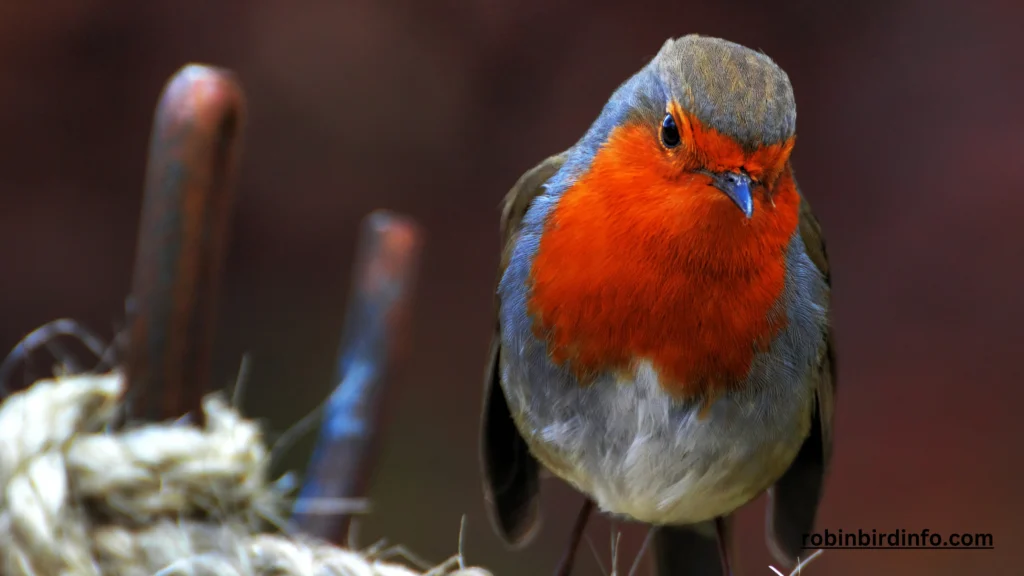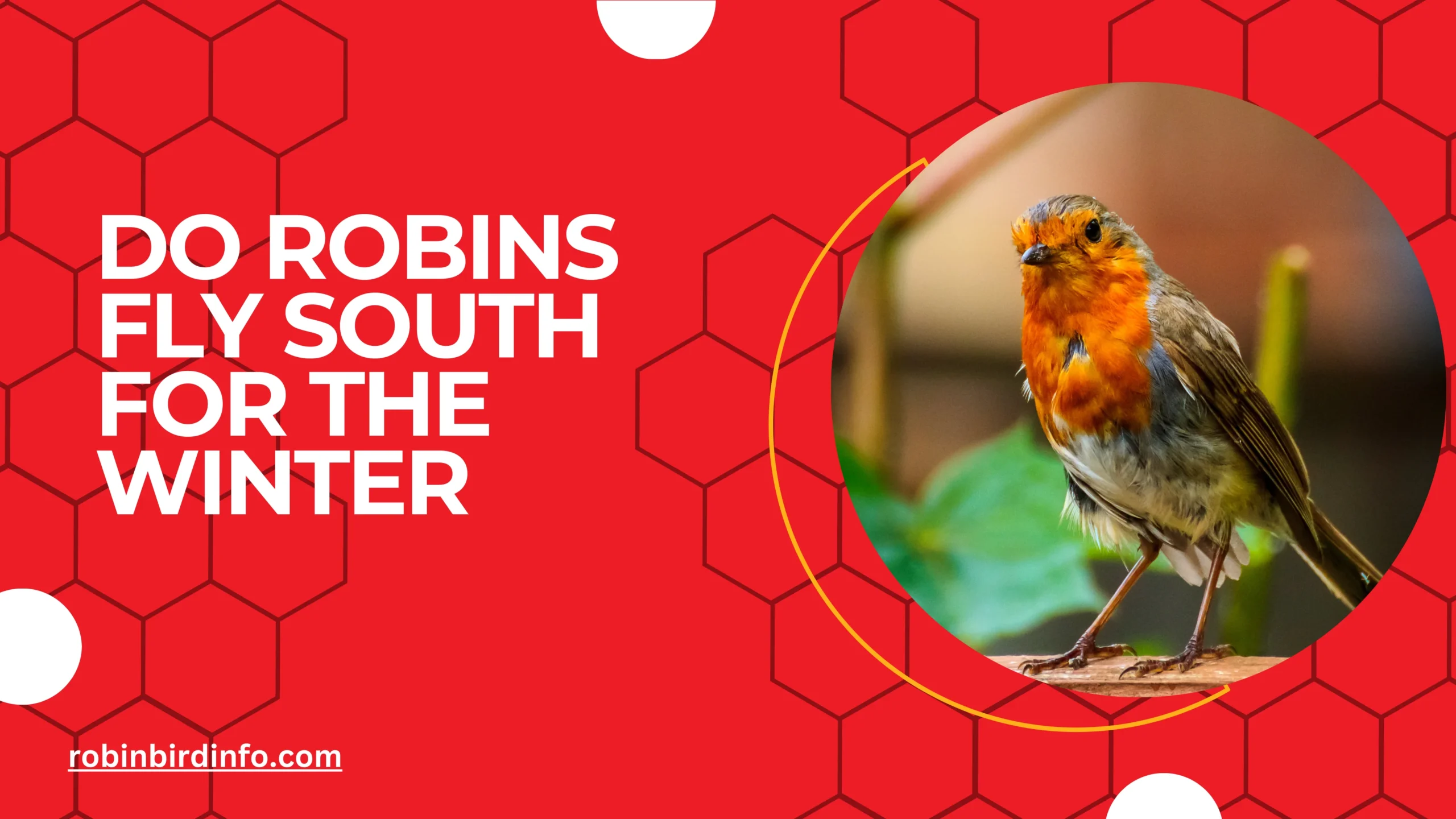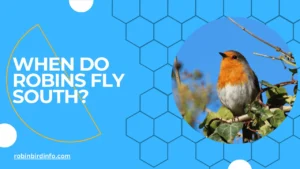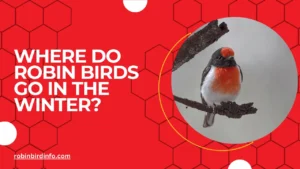As the crisp autumn air settles in and leaves begin their fiery descent, a question tugs at our curiosity: Where do Robins go?
These familiar songbirds, with their vibrant red breasts, are a constant presence throughout spring and summer. But do they simply disappear come winter, or do they embark on a remarkable journey south?
The answer, dear reader, is more nuanced than a simple yes or no. Unlike some bird species who undertake epic migrations across continents, Robin populations exhibit a fascinating diversity in their winter strategies. Understanding these strategies sheds light on the remarkable adaptability of these birds and the delicate balance of the natural world.
So, grab a cup of tea, settle in by the window, and prepare to unravel the migratory mysteries of the American Robin!
Contents
Section 1: Migration Patterns of American Robins
Resident Populations: Some populations of American Robins, particularly those living in milder climates like the southern United States and California, are resident and do not migrate. These birds can be seen year-round in their territories.
Migratory Populations: Many Robin populations, especially those breeding in northern regions, are migratory. These birds undertake long-distance migrations to warmer climates during the winter months.
Timing of Migration: The timing of Robin migration is influenced by several factors, including temperature, food availability, and day length. As temperatures drop and food sources become scarce, migratory Robins begin their journey south.
Section 2: The Journey South
Flight Paths: Migrating Robins follow specific flight paths as they travel south. They often follow major river valleys and coastlines, taking advantage of favorable wind conditions.
Challenges of Migration: Migrating Robins face numerous challenges during their journey, including adverse weather conditions, food scarcity, and predation. They must expend significant energy to fly long distances and find suitable stopover sites.
Energy Requirements: To fuel their migration, Robins rely on stored fat reserves. They must consume large quantities of food, such as fruits, berries, and insects, to build up these reserves before embarking on their journey.
Section 3: Wintering Grounds
Preferred Wintering Habitats: During the winter, migrating Robins seek out areas with abundant food sources and mild climates. They often congregate in large flocks in forests, woodlands, and urban areas.
Food Availability: In their wintering grounds, Robins rely on fruits, berries, and insects as their primary food sources. They may also feed on discarded food from human settlements.
Social Behavior in Winter: During the winter, Robins may form large flocks, especially in areas with abundant food resources. These flocks provide safety in numbers and help birds find food more efficiently.
Section 4: The Return Journey
Timing of Spring Migration: The timing of the return migration of Robins is influenced by factors such as increasing day length, rising temperatures, and the availability of food.
Challenges of the Return Journey: Similar to the fall migration, the spring migration presents challenges for Robins. Adverse weather conditions, such as storms and cold fronts, can delay their journey and increase the risk of mortality.
Establishing Breeding Territories: Upon returning to their breeding grounds, Robins establish territories and seek mates. They defend their territories from other birds and begin to build nests.
Section 5: Conservation Implications

Habitat Loss and Fragmentation: The loss and fragmentation of natural habitats can negatively impact Robin migration and survival.
Climate Change: Climate change can disrupt migration patterns, alter the timing of breeding seasons, and affect the availability of food resources.
Conservation Strategies: To protect Robin populations, it is important to conserve their habitats, reduce pesticide use, and minimize human disturbance. Participating in citizen science projects can also help researchers track Robin populations and inform conservation efforts.
Conclusion
The migratory behavior of American Robins is a fascinating aspect of their life cycle.
By understanding the factors that influence their migration patterns, we can appreciate the challenges they face and the importance of protecting their habitats. By taking steps to conserve these birds and their environments, we can ensure that future generations can continue to enjoy the beauty and song of American Robins.
FAQ’s
When do Robins migrate?
The timing of Robin migration varies depending on geographic location and weather conditions. Generally, Robins begin their southward migration in late fall and return to their breeding grounds in early spring.
How far do Robins migrate?
The distance that Robins migrate varies depending on their starting location. Some Robins may only migrate a short distance, while others may migrate hundreds of miles.
What dangers do Robins face during migration?
Migrating Robins face a variety of dangers, including harsh weather conditions, predators, and collisions with buildings and vehicles.
How do Robins find their way during migration?
Robins use a combination of navigational cues, including the position of the sun, stars, and Earth’s magnetic field, to find their way during migration.
What do Robins eat during migration?
Migrating Robins rely on a variety of food sources, including fruits, berries, and insects. They may also feed on nectar from flowers.
How can I help migrating Robins?
You can help migrating Robins by providing food and water sources in your yard. Planting native plants that produce berries and fruits can also be beneficial.








